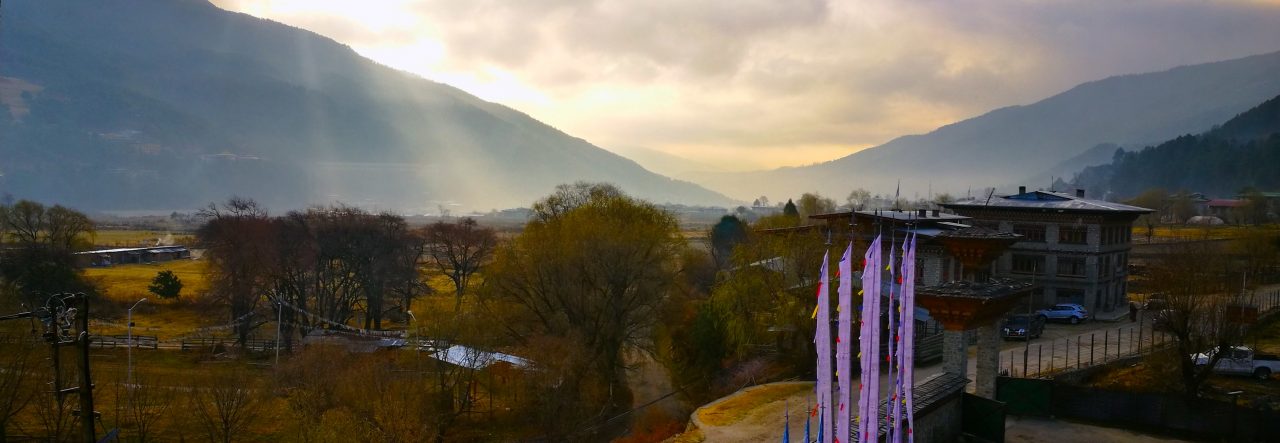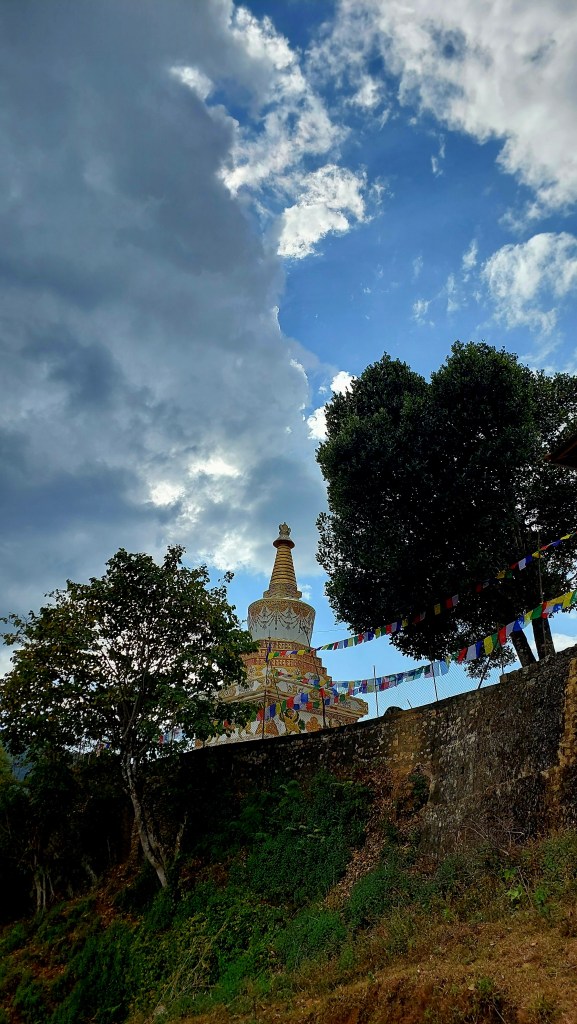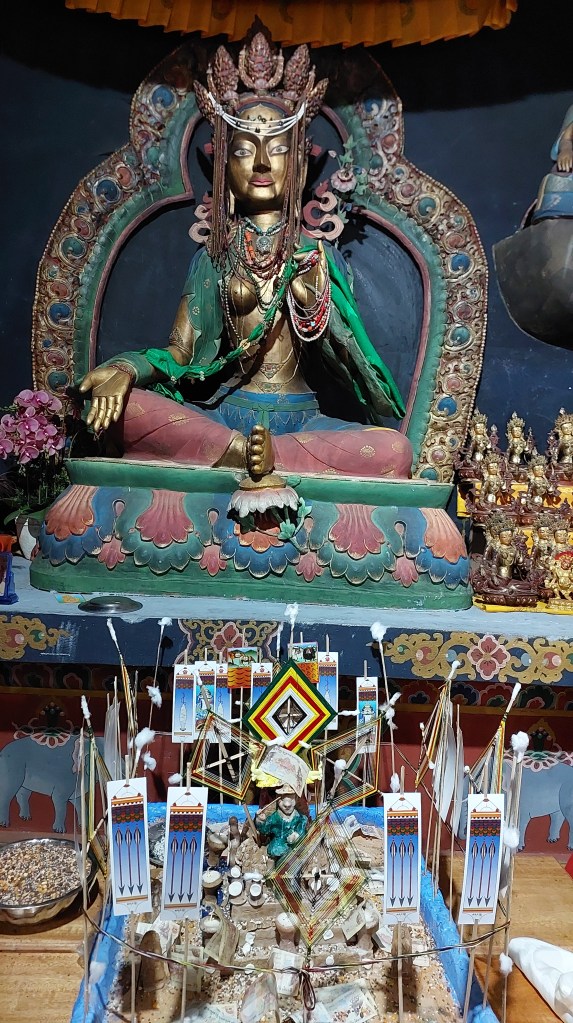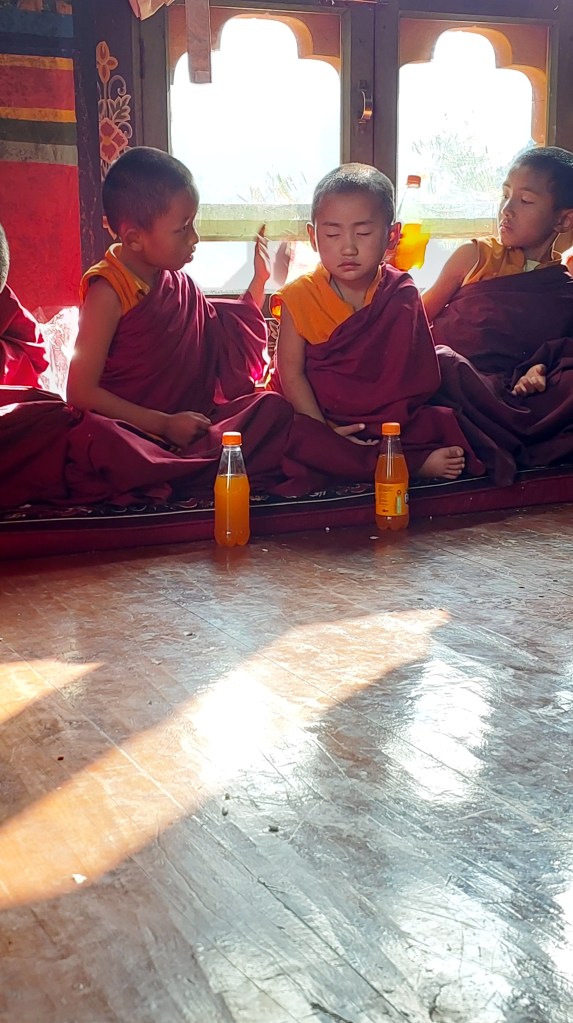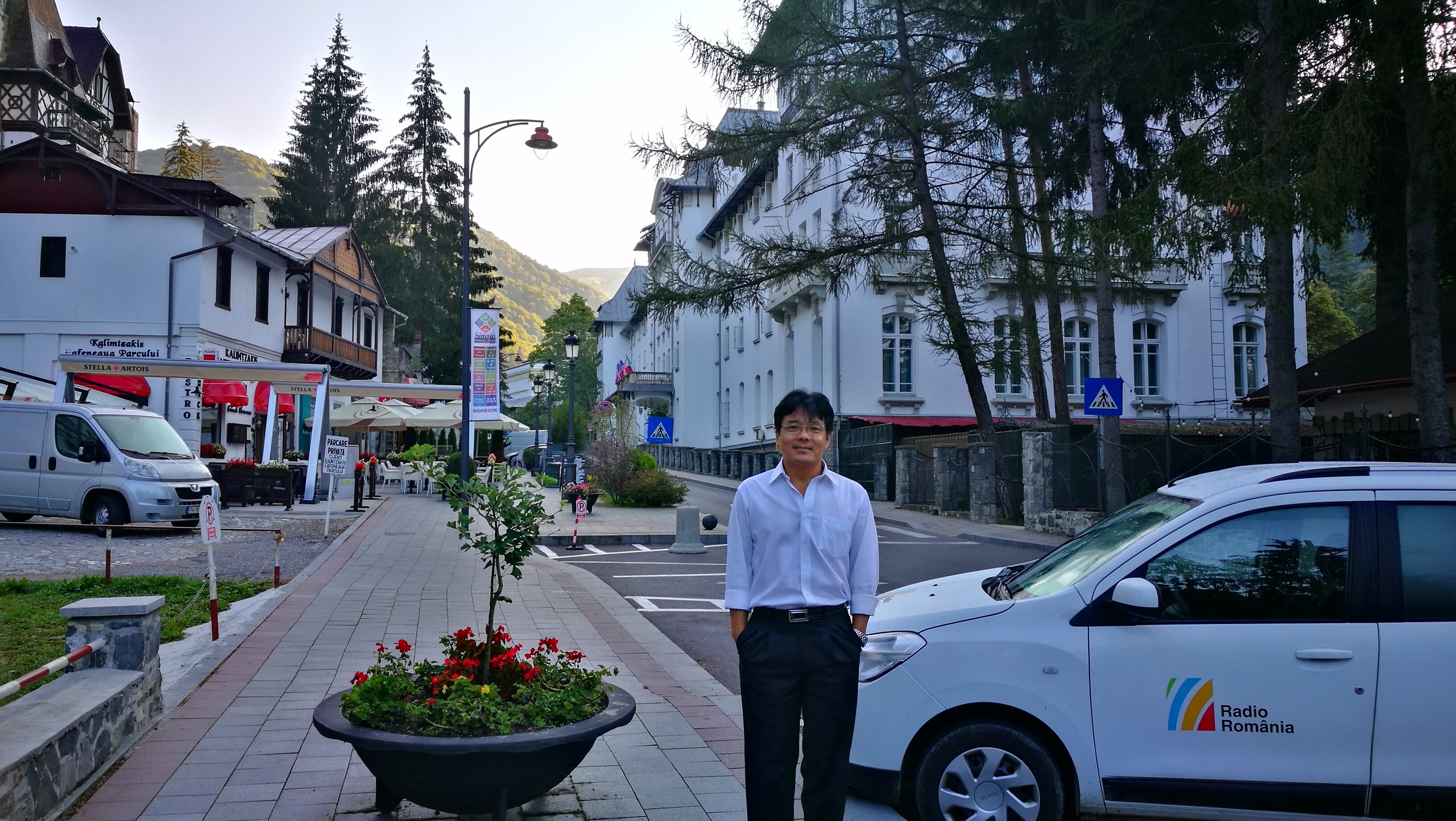Morakha takes its name from a remark made by an attendant of Guru Padmasambhava. It was during the time when Guru Rimpoche and Mendarawa were in the area. Mendarawa was in the village, while Guru was meditating in the mountains between Phobjikha and Athang. When the Guru inquired about Mendarawa, the attendant is supposed to have replied, “She is (Mo-ra) in the village (Khar)”. Thereafter the place where Mendarawa dwelled was named Morakhar, and later simply Morakha.
Morakha Temple stands over the village of Lomsokha in the main Athang valley. The site is believed to be the spot where Mendarawa practised the Vajrapani saddhana – known as Chana Dorje drub in Bhutanese. A temple was later built on the spot by the followers of Mendarawa and Guru Rimpoche. The exact date is not known.
Coupled with the Athang Tsho (lake), which is at the other end of the valley, the region was a mandatory destination of all emanations of Terton Pema Lingpa, and the followers of the Peling tradition. The area, therefore, received hundreds of pilgrims each year – thus adding to the prominence and economy of Athang region since the mediaeval era. It was only in the post-modern era that the region saw the decline, as the natives were lured to the urban areas of Thimphu and Wangdue. During the same period, pilgrimages from Tibet stopped for reasons known to everyone.
Mendarawa, and Adha mathra and Adha Rachu:
In front of Morakha temple is the boulder that is believed to be the handloom of Khandro Mendarawa, the spiritual consort of Guru Padmasambhava. While the Guru spent his time in the mountains of Athang (also colloquially pronounced as Adha), Mendarawa spent her days practising the Vajrapani mantra, and by night weaving the traditional clothes. The stone relic can be seen even today. Some local sources claim that the origins of the popular Adha mathra and Adha rachu – a traditional handwoven textile and pattern have their origins here in the works of Khandro Mendarawa. And because of their association to Mendarawa, these patterns of traditional textiles have spiritual blessings and are auspicious for special occasions.
According to one source, Athang Morakha is only place visited by Mendarawa. All other important sites of Guru are associated to either Yeshey Tshogyel or Tashi Khyidron. This makes Athang a very special valley
Betel leaves:
Another very popular item associated with this place and to Mendarawa are the betel leaves, which are believed to have been planted by her. The only surviving plant, which is standing in front of the temple, is jealousy guarded, as many attempts to graft and reproduce have been unsuccessful. The betel leaves from this plant are used for making mendrub (medicinal pills) or rilbu (blessed pills). Another local claims that the betel leaves available in the wild in the jungles of Athang gewog are equally blessed by Mendarawa – and they are used for Zhugdrey ceremony in Gangtey Monastery during the annual Gangtey Tshechu and Drubchen.
Chana Dorje relic (ter) statue:
The most prized possession of Morakha Lhakhang is a finger-sized relic statue of Vajrapani (similar to the one in Bartsham temple in Trashigang). It is tucked away in a secured safe and can be seen only on special occasions.
Vajrapani is referred to, in abbreviated form, as Chador in Bhutanese, and every newborn that receives his or her name from this temple is called Chador. So, every other person in this gewog is called Chador, and almost every Chador you meet may be from Athang gewog.
According to the caretaker monk, the sacred Chador statue is believed to have been retrieved by Terton Pema Lingpa from Mebar Tsho (lake) in Bumthang. “One statue flew to Tsakaling in Mongar, another to Paro Dongkala, and the last one came to Morakha,” he adds.
When the original Morakha temple was destroyed by fire this relic statue is believed to have flown away and stayed safe on a nearby tree. It was later discovered by the resident monks and brought back to the temple.
Vajrapani is also a popular deity, who is revered as a part of the supreme Trinity of Protector Deities called the Rigsum Gonpo (རིགས་གསུམ་མགོན་པོ་) – literally translated as “Lords of Three Families” with the three families being Avalokiteshvara, Manjushri and Vajrapani.
The affiliation to Gangtey Gonpa:
The association of Morakha Lhakhang to Gangtey Gonpa started with the life and works of the Second Gangtey Trulku, Tenzin Lekpai Dondrub (1645-1727), who is considered as the most prolific of all the previous Gangtey Trulkus, and who operated mainly in this region. Although a realised being, he lived a simple life of an itinerant monk – who are locally referred to as gomchens.
His works and the patronage he received from the Athang area became the inspiration for the popular adage, “Lama Ganteyb. Jindha Adhap” (Lama from Gantey, patrons from Athang). Today the monastic center is affiliated to Gangtey Gonpa, and the current Gangtey Trulku Rimpoche initiated the reconstruction and the expansion of the temple into a proper monastic institute.
Who must visit?
While Chana Dorje practice is recommended for everyone to pave the path towards ultimate enlightenment, the blessing is a must for those born with birth-mewa 2 and 4. It is strongly recommended that people born with these mewas make a pilgrimage to this sacred place and/or to Bartsham Chador Lhakhang in Trashigang. This is because Chana Dorje is the deity of those born with birth mewa 2 and 4. Birth mewa 2 are those born in the 1944, 1953, 1962, 1971, 1980, 1989, 1998, 2007, and 2016. Birth mewa 4 are those born in 1942, 1951, 1960, 1969, 1978, 1987, 1996, 2005, 2014, 2023
Getting there:
The total drive time from Thimphu is just 3-4 hours making it a nice day trip. There is a farm road that takes off from Kamichu on Wangdue-Tsirang highway. It is pliable with small cars (maybe not during the wet season).
When you get down to the valley floor from the Lapsaka Pass, look for a signboard. Take the road to the left marked as Athang Morakha Changlochen Chador Lhakhang.
What to take:
Take rice, flours, lentils, cooking oil and food supplies for the monks there. There is a community of monks headed by the abbot – with no subsidy from the state.
Where to stay:
There are decent guest rooms at Morakha Lhakhang in case people want to stay overnight, which I highly reccomend. Contact person: Lopen Sonam Drugyel 17480524.





